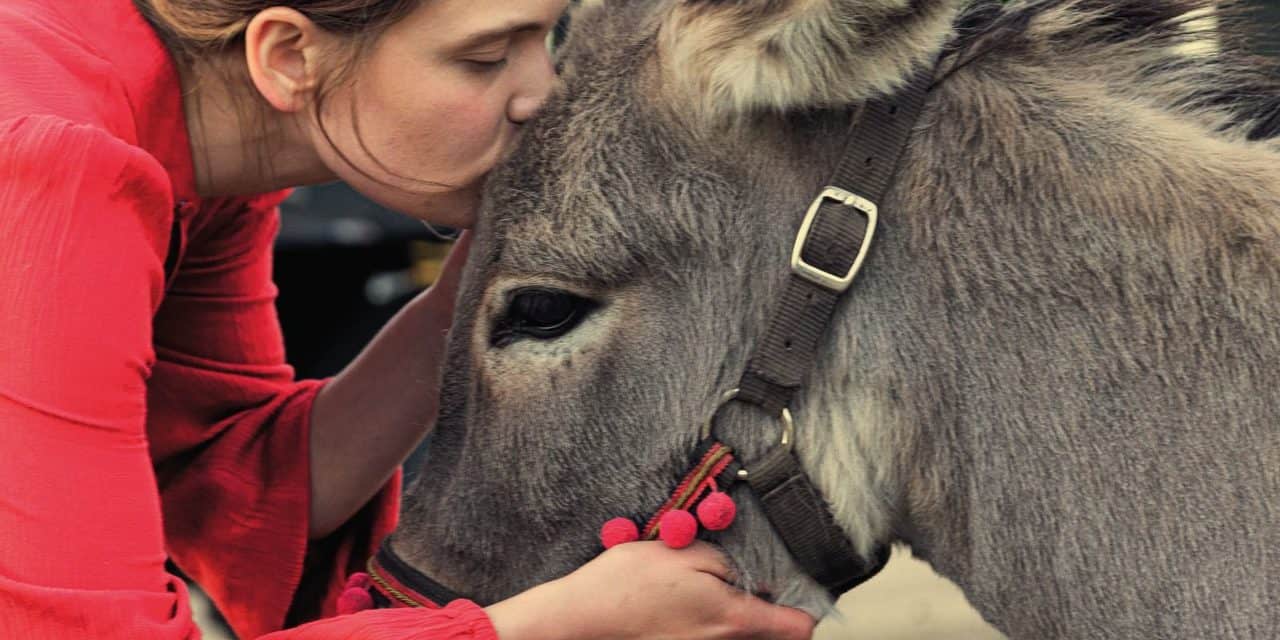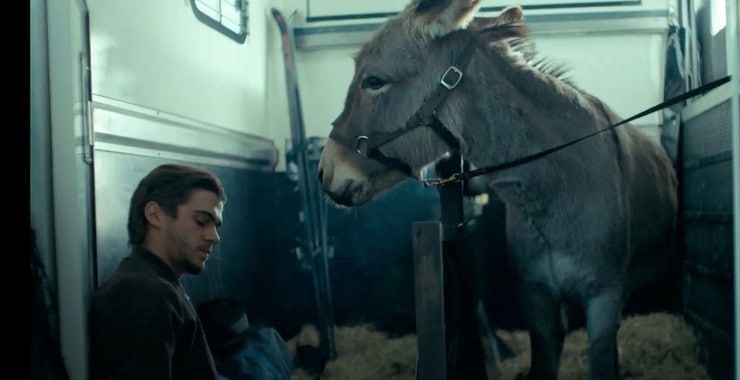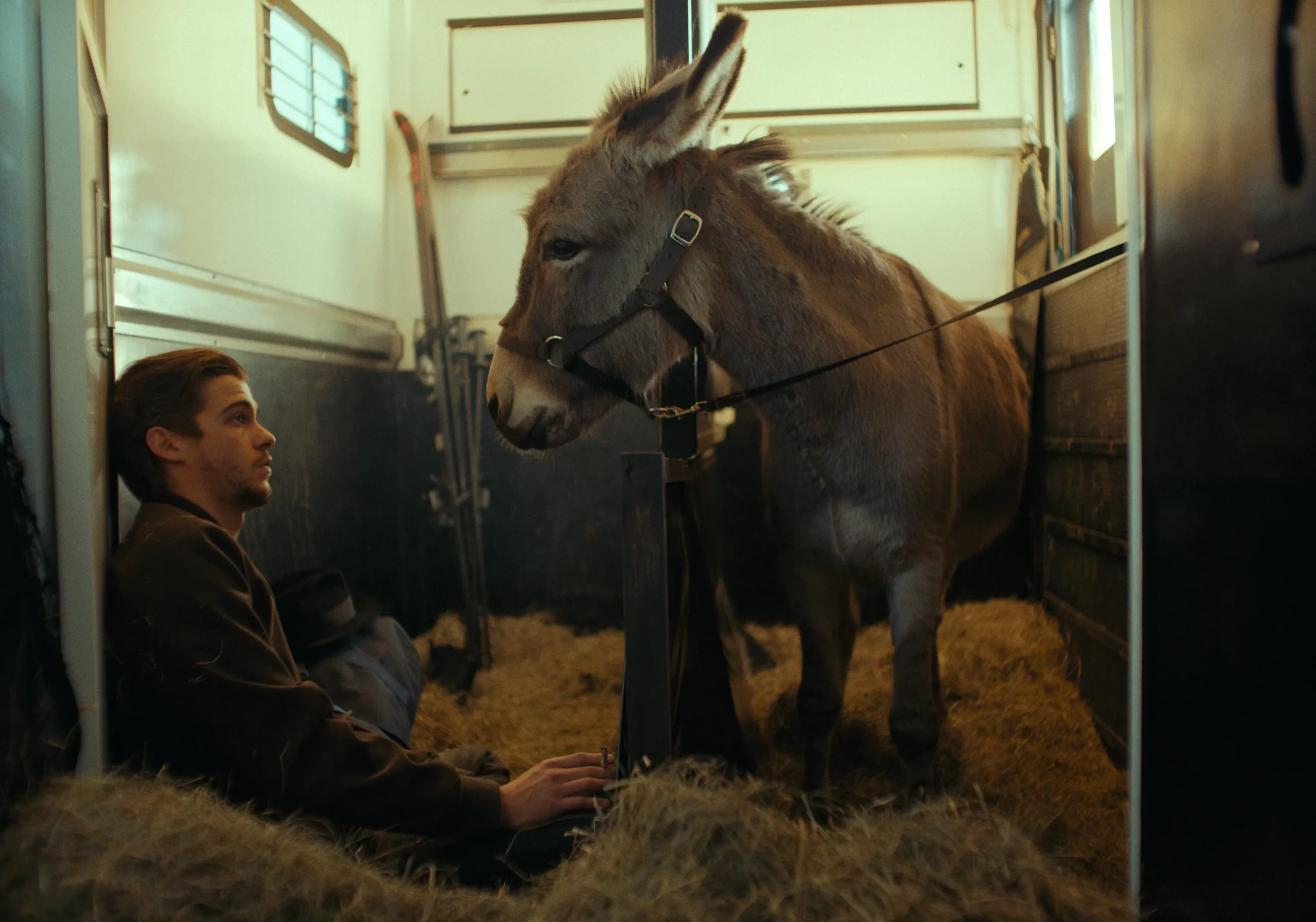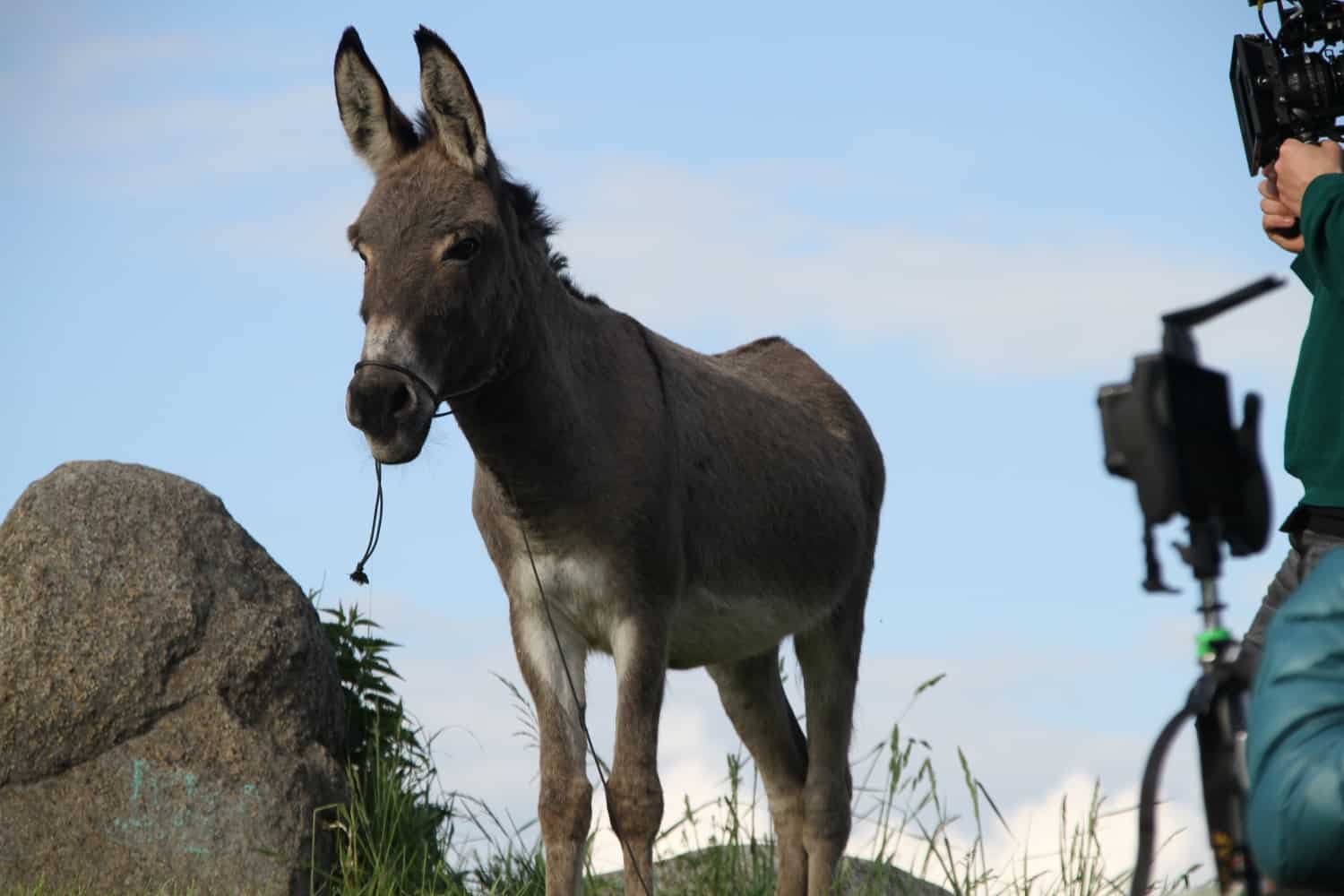The 2022 drama road movie titled EP, also known as IO in Polish, was directed by Jerzy Skolimowski. The film draws inspiration from Robert Bresson’s 1966 movie, Au Hasard Balthazar, and portrays the story of a donkey born in a Polish circus.
EO had its premiere in May 2022 at the Cannes Film Festival, where it competed and won the Jury Prize, sharing the award with The Eight Mountains. The movie was submitted by Poland and received a nomination for the Best International Feature Film category at the 95th Academy Awards.
According to Metacritic’s weighted average based on 30 reviews, the film has a score of 85 out of 100, indicating “universal acclaim.” Additionally, EO secured the fourth position on Cahiers du Cinéma’s list of top 10 films in 2022.
The Storyline of EO

“EO” is a moving film by Jerzy Skolimowski that tells the story of a grey donkey named EO and his journey through modern Europe. EO meets both good and bad people, experiences joy and pain, and endures the unpredictable turns of fate that transform his despair into unexpected happiness.
Throughout his journey, EO never loses his innocence, offering a unique perspective on the world as seen through the eyes of an animal. Skolimowski’s film is a powerful statement on animal treatment, showcasing heartwarming moments of kindness and gut-wrenching scenes of brutality as EO encounters people along his journey.
As we see how people interact with and treat animals, the film invites viewers to consider their own relationship with the natural world and how they can contribute to a more compassionate and sustainable society.
Through its poignant depiction of life’s cycle, “EO” encourages viewers to reflect on their own experiences and relationships, prompting us to think about how we treat others and the impact that our actions have on the world around us.
As we imagine what EO thinks about how people treat one another, we are reminded of the importance of empathy, kindness, and respect and inspired to work towards a brighter future for all living beings.
Review of EO

The closing intertitle of the film reassures viewers that “the animals’ well-being on set was always our first priority” and underscores that the film was made out of love for animals and nature. It’s a reassuring note as the titular donkey travels through a world fraught with violent encounters with bestial humans.
Football hooligans brutally beat him, blaming his braying for their loss in a game. A furrier cruelly snaps the necks of caged foxes, earning himself a swift hoof in the face from EO. Then, there’s the illegal flesh trader who sells EO for salami, revealing the unsettling truth about how animals are exploited and mistreated for human consumption.
Amidst all the violence and cruelty, the donkey forms an unexpected bond with a friend who confesses to having eaten hundreds of kilograms of meat, including donkey meat. The film raises unsettling questions about our relationship with animals and the natural world, forcing us to confront uncomfortable truths about our own complicity in their suffering.
It’s a stark reminder that the way we treat animals reflects our own humanity and our capacity for empathy and compassion. The film’s commitment to animal welfare and its unflinching portrayal of the harsh realities of the world we live in make it a powerful and thought-provoking work.
Despite the many violent encounters and cruelties that the titular donkey faces in the film, there are also moments of heart-stopping tenderness and beauty that provide a poignant counterpoint. EO has the power to elicit genuine joy and happiness from the people he encounters, as seen in the smiles he brings to the faces of children at a petting zoo.
But it is his relationship with Magda, a young woman who performs under the circus name Kasandra, that is the most touching and profound. Magda is immediately drawn to EO’s gentle and loving nature, and the donkey reciprocates her affection with an aching sense of devotion.
Their bond is a testament to the deep emotional connections that can exist between animals and humans, and it is a beautiful reminder of the power of love to transcend species boundaries. Despite the challenges that they face together, their shared love and devotion provide a glimmer of hope in an often bleak and brutal world.

The film’s ability to capture both the harsh realities of life and the moments of beauty and tenderness that can be found within it is a testament to the director’s skill and sensitivity, and it makes for a deeply moving and memorable viewing experience. EO, the titular donkey in the film, makes his first appearance in a circus, where the flashing crimson lights create an eerie and foreboding atmosphere.
However, EO is not alone; he has Magda, a young woman who performs under the name Kasandra, to protect him from the dangers of the big top. She shields him from the whip, the crowds, and the aggression of men, creating a touching bond between them. However, when animal rights protesters force a ban on circus animals, EO is plunged into a series of lonely and picaresque encounters.
As EO wanders through the world, he encounters a range of characters, from the absurd to the cruel. In one scene, he watches solemnly as a local official brandishing a comically oversized pair of scissors declares that he “works tirelessly, amending any irregularities.”
In another, he inadvertently causes chaos at an upmarket stable, his movements triggering perfectly timed slapstick comedy. And in yet another, he stands outside a shop window filled with exotic fish, swimming endlessly in their tanks, a poignant metaphor for the captivity and confinement that many animals face in modern society.
Through these encounters, Skolimowski’s film quietly politicizes the plight of animals, highlighting the many ways in which they are mistreated and exploited by humans. And yet, even in the face of such cruelty, EO manages to find moments of joy and companionship, proving that even in the darkest of circumstances, there is always room for hope and connection.
Michal Dymek, the cinematographer, infuses these scenes with a combination of rough, hand-held realism and ethereal, poetic enchantment. His camera often fixates on EO’s dark eyes, which appear to be immense pools of insight.
In one particular sequence, Dymek captures EO in a stable, bathed in light that evokes a divine aura reminiscent of the “little donkey” from Christian mythology, echoing the profound spiritual allegories in Bresson’s original film. Later on, EO is described as having “three hooves up in high heaven,” reinforcing the notion that he is a sacred soul, touched by transcendence.
What’s truly remarkable about the film are the sequences that venture into nightmarish realms. Director Skolimowski’s diverse body of work includes the surreal and unsettling 1978 British horror movie, The Shout, and it’s clear that his artistic sensibilities have a strong influence on the film.
The cinematography takes on a blood-red hue, and the drone footage captures sweeping, otherworldly shots of woodlands that seem to be straight out of a twisted fairy tale, a place where one might encounter Hansel and Gretel. The eerie and haunting atmosphere of the film is further amplified when EO journeys downstream, watched by creeping spiders and screeching owls.
The lurking danger is palpable as he’s caught in the crosshairs of rifle sights, reminiscent of the tension in Charles Laughton’s The Night of the Hunter. As he delves deeper into his quest, EO’s journey begins to resemble Orpheus’s descent into the underworld, as a crepuscular tunnel provides an eerie backdrop to his trek.
His path seems to lead him to the depths of hell, only to resurface in front of towering windmills, reminiscent of Don Quixote’s own quest. These dreamlike sequences, a blend of horror and fantasy, are a testament to Skolimowski’s masterful direction and Dymek’s exceptional cinematography, creating an unforgettable cinematic experience.
Our Verdict
Paweł Mykietyn’s inventive and often experimental score is a standout feature of the film. It deftly underscores the constantly shifting tones of Skolimowski and co-writer-producer Ewa Piaskowska’s unique vision, which is at once grounded in reality and soaring into the otherworldly territory.
One memorable sequence involves a four-legged robot scampering about in a science-fiction-inspired moment that left me puzzling and marveling at the same time. What’s striking about the film is its unflinching perspective, as it offers a donkey’s-eye view of the world, one that’s both wondrous and terrifying.
It lays bare humanity’s madness, capturing the laughter and the cruelty, the kindness and the killing (as sudden and brutal as it may be). It also explores the intertwined complexities of love and hatred and the interplay between them.
But just when you think you’ve seen it all, Skolimowski throws in a curveball. In a cross-cutting scene between carnivores and communion, Isabelle Huppert makes a surprise appearance, reminding us of the absurdity of humanity with its imperious and often incestuous tendencies.
It’s a poignant moment, one that’s filtered through the doleful eyes of a lowly beast, which reminds us that we may see ourselves reflected in its gaze. The film’s unique blend of rawness and dreamlike wonder is an unforgettable experience and a testament to the creative vision of its filmmakers.
Our Rating: ⭐ (4.9/5).



